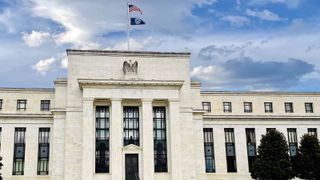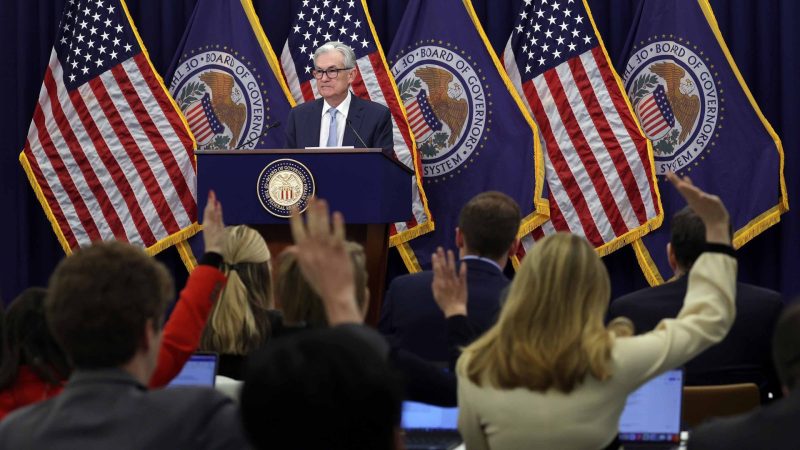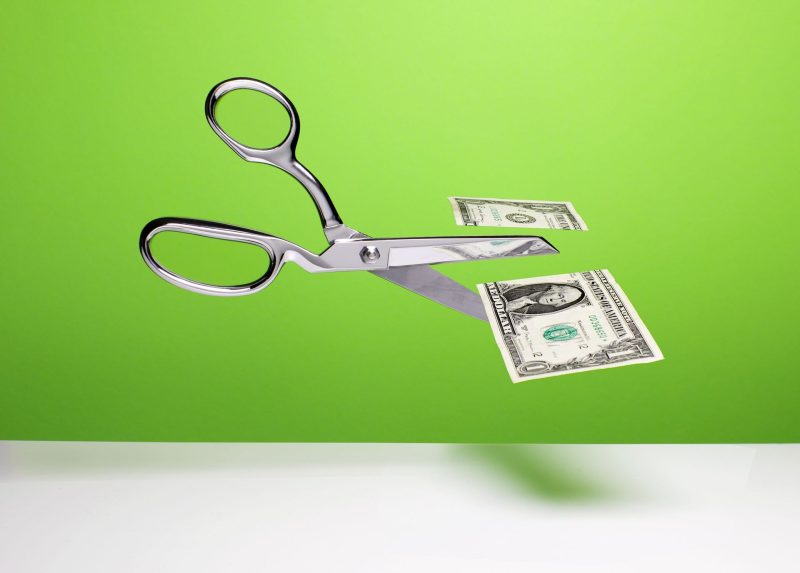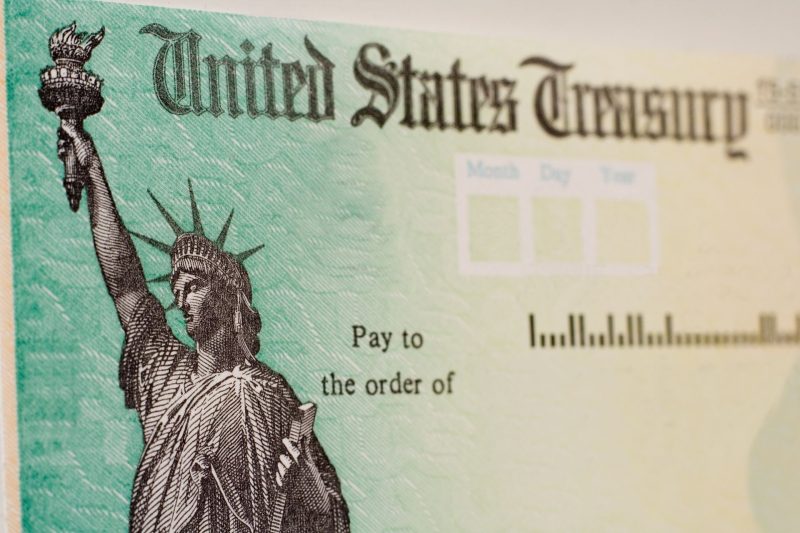Will the Fed Cut Rates in September? Here’s What Experts Predict

WASHINGTON, DC - DECEMBER 14: Federal Reserve Board Chairman Jerome Powell takes questions during a news conference after a Federal Open Market Committee meeting on December 14, 2022 in Washington, DC. The Federal Reserve announced that it will raise interest rates by a 0.5 percentage point to 4.5. (Photo by Alex Wong/Getty Images)
The Federal Reserve is going to cut interest rates at the next Fed meeting, experts say. Only the size and pace of the central bank’s easing campaign remain in doubt.
To recap: the worst bout of inflation to hit the U.S. economy since the Carter and Reagan administrations compelled the central bank’s rate-setting committee to raise the short-term federal funds rate to a 23-year high. It has been sitting at a target range of 5.25% to 5.5% for more than a year. Inflation peaked more than a year ago but remains sticky, making the rate-setting committee, the Federal Open Market Committee (FOMC), cautious about easing too soon.
However, the Fed has a dual mandate. In addition to stable prices, it is supposed to support maximum employment. And, alas, the lagged effects of restrictive monetary policy are beginning to show up in the labor market. Fed Chief Jerome Powell has always said the FOMC would be data dependent, and he acknowledged risks to the jobs side of the mandate at the July Fed meeting. Powell doubled down on his dovish turn at Jackson Hole in August.
Unless it’s an emergency, the Fed doesn’t make changes to policy without telegraphing them well in advance. A rate cut at the next Fed meeting isn’t a certainty, but it would be a shock if the FOMC stood pat.
A rate cut is coming
“History back to 1990 supports the idea that an initial Fed rate cut of 50 basis points signals an imminent recession (2001 and 2007),” write Nicholas Colas and Jessica Rabe, co-founders of DataTrek Research, in a note to clients. “Initial cuts of 25 basis points (1995, 1998, 2019) do not carry that baggage. Powell and the FOMC know this history.”
Colas and Rabe expect a quarter-point cut, or 25 basis points (0.25%), at the next Fed meeting. That is by far and away the betting favorite. However, a cut of 50 basis points (bps) remains in play.
As of September 12, interest rate traders heavily favored 25 bps of cuts – but they were somewhat less certain about it than they had been 24 hours earlier. Odds stood at 73%, down from 86% the previous day, according to CME Group’s FedWatch Tool. Meanwhile, the probability of a half-point cut rose to 27% from 14%.
It’s also important to know that regardless of how much the Fed cuts at its next meeting, the race is already on to predict the trajectory of future reductions to borrowing costs.
With the Fed set to pivot, we turned to economists, strategists, investment officers and other experts for their thoughts on monetary policy going forward. Please see a selection of their commentary, sometimes edited for brevity or clarity, below.
Fed rate cuts: what the experts say

“The Fed has the green light to cut 25 bps given that the August CPI report was in line with expectations. It’s possible that some will be disappointed that there wasn’t a lower-than-expected inflation reading, which might have given the Fed more room to cut 50 bps, but most of the Fed speakers have already telegraphed their desire to start slowly and not begin with a jumbo cut. Going forward, the risks are clearly weighted toward slowing growth and a deteriorating labor market, and that’s why there are still four 25 bps cuts priced in with only three meetings left in the year (i.e. implying at least one of the three meetings would have a 50 bps), but if the economy continues to slow – and not drop into an abrupt recession – the Fed will be able to cut at a measured, 25 bps-per-meeting pace.” – Chris Zaccarelli, chief investment officer at Independent Advisor Alliance
“The Fed probably should cut 50 bps next week …
As the Fed themselves have said, inflation risks are moving into the rearview mirror, and they do not want to see further labor market weakness. Though strong wage growth suggests the bottom has not yet fallen out of the labor market, jobs creation has declined quickly. In an environment where policy is already restrictive by around 200 bps, moving more quickly towards neutral is a highly reasonable stance, in our view.
… but unless we see a downside surprise on inflation, my base case is that they’ll cut 25 bps.” – Lauren Goodwin, economist and chief market strategist at New York Life Investments
“Following the payrolls report last week, we updated our Fed call. We now expect the Fed to cut rates by 25 basis points (bps) per meeting starting next week and until March 2025. After these cuts, we think the Fed will be more gradual and resort to one cut per quarter. We still see outsized recession-like cuts as unlikely unless the economy materially deteriorates.” – Antonio Gabriel, global economist at BofA Securities
“August’s CPI report cemented market expectations that the FOMC will ease by 25 bps at its next meeting. The implied probability of a 25 bps move jumped to 83% from 66% shortly after the August core CPI print. We think investors are now well positioned for September’s meeting, but we still see a strong chance of 50 bps cuts in both November and December.” – Ian Shepherdson, chairman and chief economist Pantheon Macroeconomics
“Stable producer prices should drive investment and that will drive the economy. It is time for the Fed to cut, but they may well take it slow and steady. That seems to be their operating model. A 25 bps cut in September is the most likely outcome.” – Scott Helfstein, head of investment strategy at Global X
“The Federal Reserve is set to start shifting policy and lower rates at their next meeting. The big question will be whether the Fed cuts by 25 bps or 50 bps, and it’ll likely come down to Chair Powell as to whether they go big to get ahead of clearly slowing labor market trends.” – Sonu Varghese, global macro strategist at Carson Group
“The Fed is weighing the stickiness of service price inflation on the one hand against the softening of the job market on the other hand. The tradeoff makes them more likely to cut rates by a quarter percent at next week’s decision than make a larger half-percent cut.” – Bill Adams, chief economist at Comerica Bank
“Inflation trends will give the Fed the opportunity to pivot toward the employment mandate for the rest of this year. Given the stickiness of services inflation, the Fed will likely cut by 25 bps in the upcoming meeting and reserve the potential for more aggressive action later this year if we have further deterioration in the job market.” – Jeffrey Roach, chief economist at LPL Financial
“Sticking the landing on rate policy is important to the Fed, but so is controlling the narrative and maintaining the central bank’s credibility. With that in mind, there was nothing in the August inflation report that was likely to sway policymakers from the measured quarter-percent cut that they’ve been guiding expectations toward for some time.” – Jim Baird, chief investment officer at Plante Moran Financial Advisors
“We find ourselves at a point where the markets are pricing in an aggressive policy rate cutting cycle, which to us appears to be overdone relative to what the Fed has suggested would be appropriate and relative to the underlying economic conditions at this stage. So, while we’re quite certain that the Fed will commence with its rate cuts at its next meeting, there are several significant unknowns that cloud the extent and speed of rate cuts. From election/policy uncertainty for 2025, U.S. debt/Treasury supply dynamics and a particularly impactful period for volatile seasonal factors in economic data, there is a good deal we don’t now know about the year ahead.” – Rick Rieder, chief investment officer of global fixed income at BlackRock and head of the BlackRock global allocation investment team







